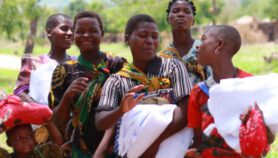By: Esther Tola
Send to a friend
The details you provide on this page will not be used to send unsolicited email, and will not be sold to a 3rd party. See privacy policy.
[COTONOU, BENIN] Traditional healers in Benin possess sophisticated knowledge regarding the treatment of malaria with medicinal plants, and strategies should be developed to exploit this and promote the plants‘ conservation, says a study.
Researchers at the University of Abomey-Calavi, Cotonou, documented more than 80 plants, which are believed to be antimalarial and used by traditional healers in southern Benin’s Allada plateau, to evaluate traditional knowledge and techniques for treating malaria.
SPEED READ
- Traditional healers in Benin use at least 80 plants to treat malaria
- Researchers have made a plant inventory and call for conservation of the plants
- But research into developing a vaccine must continue, says an expert
With the increase of viral resistance to antiretroviral medicines, the recourse to medicinal plants has become a therapeutic option in medicine in Benin, says the study, which was published last month in the Journal of Ethnopharmacology.
Marius Yetein, a researcher at the university and lead author of the study, tells SciDev.Net that his team used a questionnaire to collect data from 23 traditional healers and 30 medicinal plant sellers.
The team documented 82 plant species in 43 plant families as being used by traditional healers to treat malaria. The families of Rubiaceae and Caesalpiniaceae were the most represented, with seven species each, although Dichapetalum madagascariense was the species most cited by traditional healers. The team found that the healers mainly use decoction, a method of extracting medicinal chemicals from plants by boiling, to prepare remedies.
"[Our study] indicates that [traditional] healers have a very advanced knowledge of anti-malarial plants," says Yetein. "Many of these species, such as Citrus lemon, are also used for the prevention of malaria."
According to a WHO report published in 2009, which is quoted in the study, more than 80 per cent of the Béninois population use traditional medicine, due both to increasing healthcare costs and to social-cultural reasons.
The authors say their research could contribute to the conservation of traditional knowledge of antimalarial plants and to the improvement of malaria management.
But Yetein adds: "We noticed that many of the plants we documented were not subjected to screening when in fact we need to know for sure which of them have anti-malarial activity. Knowing this could lead to the development of more efficient drugs against malaria. That’s why we recommend screening strongly."
Guy Apollinaire Mensah, director of Benin’s National Institute for Agricultural Research, welcomes the study, saying that, due to the resistance of the malaria-causing Plasmodium parasite to conventional treatment, this new research is highly relevant and timely.
"Screening these plant species will contribute to the expansion of the repertoire of medicinal plants used as antimalarial treatments in Benin," Mensah says.
But he adds that the fight against the disease should take an integrated and multifaceted approach, and that research into developing a vaccine should continue.
Yetein explains that, once finalised, the study will be submitted to Benin’s Ministry of Health, with the aim of having the documented plant species screened by researchers appointed by the ministry.
References
Journal of Ethnopharmacology doi: 10.1371/journal.jep (2012)













